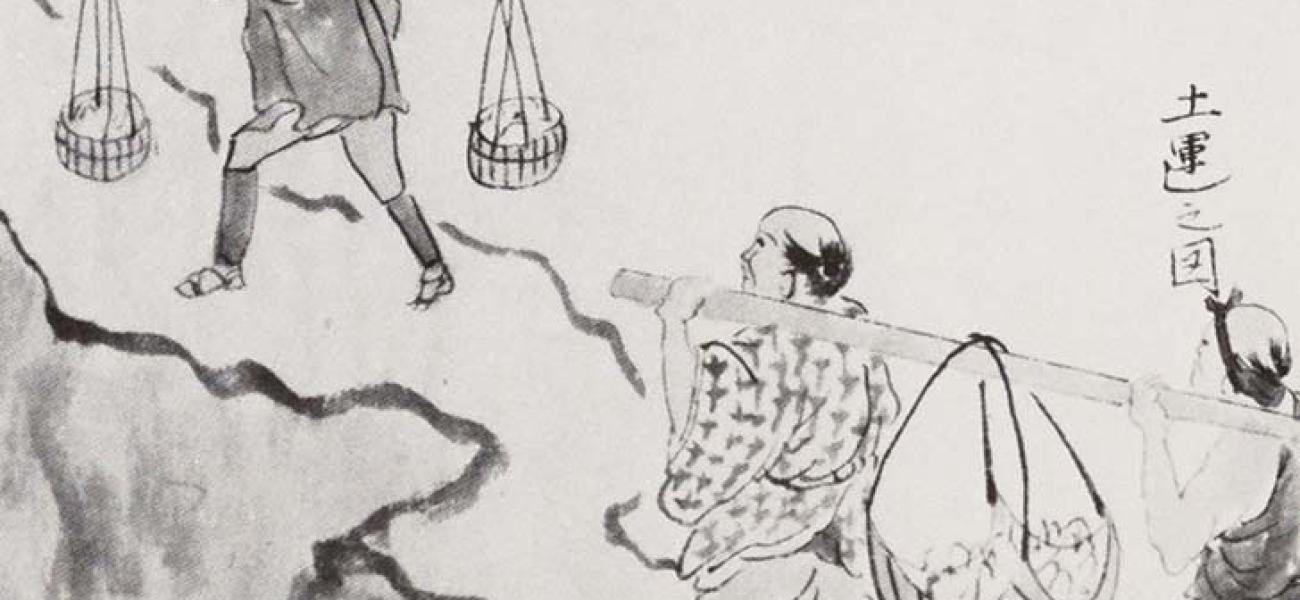It's clay that made Shigaraki. Had it not been for the dynamic processes inside the earth several million years ago–processes that, in an ancient lakebed, thrust up a ring of granite rock within which collected a rich sediment of alluvial clay–the human settlers who gave the name "luxuriant trees" (Shigaraki) to the valley enclosed by the granite hills might have made their livelihood by cutting timber, preparing charcoal, or growing tea. Instead, they became potters. By about a.d. 1300, the potters had found the clay and had begun forming it into jars and bowls which they fired in kilns tunneled into the hillside, and they bartered with farmers within walking distance. Gradually, as transportation systems and exchanges developed, the potters' wares began to reach a widening circle of markets; a variety of shapes appeared as the skills of the men who created the wares increased; glazing became commonplace. In Shigaraki's era of ultimate expansion, during the middle decades of the twentieth century, virtually every residence in Japan was heated by charcoalburning hibachi glazed with Shigaraki's trademark blue glaze.
The name Shigaraki, however, almost always evokes the image of pottery with the look of bare clay-unrefined and unglazed, as it was in those earliest jars made in the valley, and as it still is in pieces made by contemporary studio potters who have rediscovered the simple kiln technology that brings the clay to Iife. If we Iisten to voices of both the past and the present as they narrate Shigaraki's history, we often hear talk about clay–talk from the people who have dug, shaped, fired, used, or admired it.
"Shigaraki jars ... are chilled and withered ... " The earliest voice to comment on Shigaraki pierced straight to the heart of the matter. The speaker was not a potter but a Kyoto monk trained at the great Zen monastery Daitoku-ju. Murata Jukō (d. 1502) was foremost among that first generation of tea practitioners who, dispirited by prolonged civil wars, turned away from the fantasy world of serene celadons and gleaming bronzes to search for utensils that would more truly reflect the mood of the times. In truth, the practitioners were turning back toward the solace of the ancient Japanese melancholy. Three centuries before Jukō, Kamo no Chōmei (d. 1216) had summed up that proclivity toward melancholy. "On an autumn evening ... there is no color in the sky nor any sound, yet although we cannot give any definite reason for it, we are somehow moved to tears. The average person lacking in sensibility–he admires only the cherry blossoms and the scarlet autumn leaves that he can see with his own eyes."1


